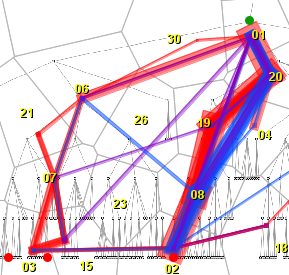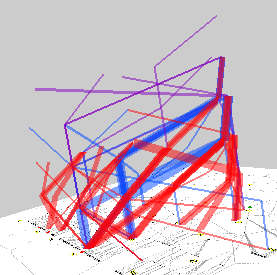relation to display content or structure
Map display of trajectories (MT)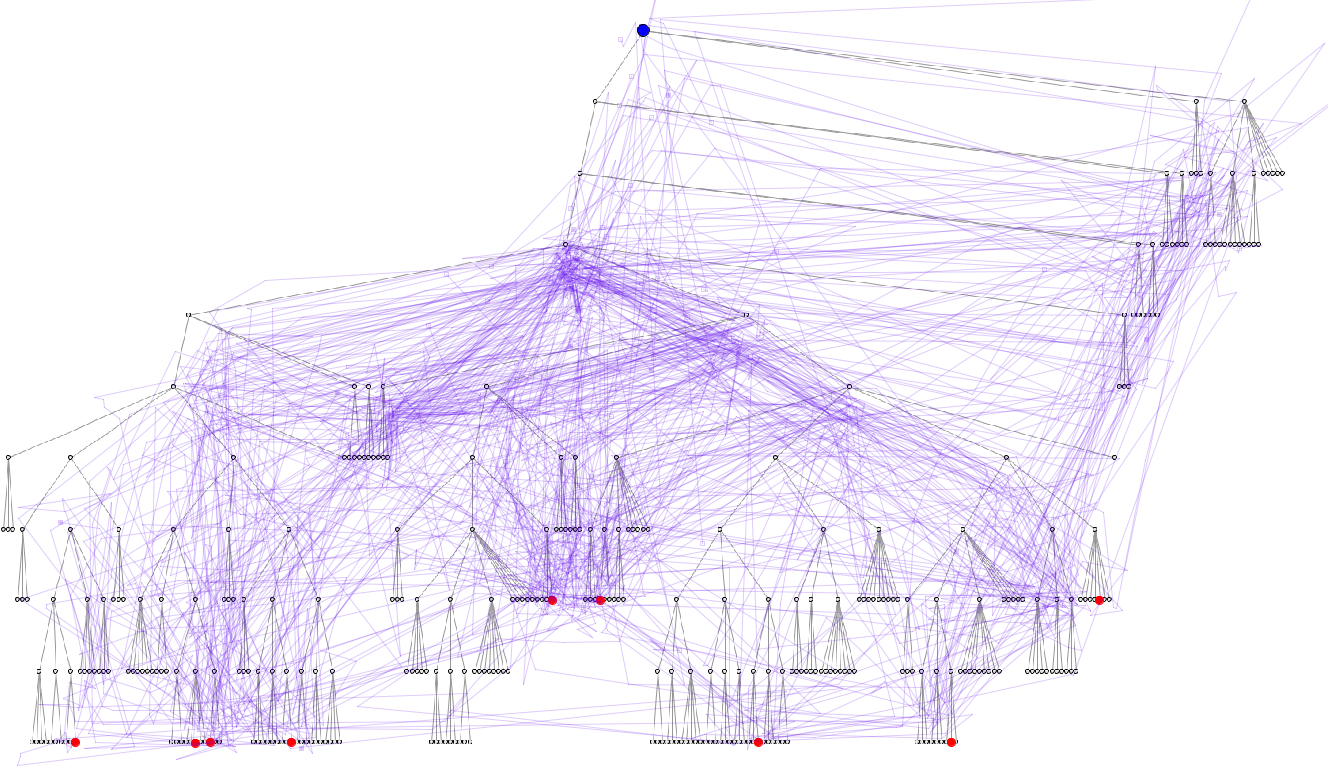 |
Flow map (FM)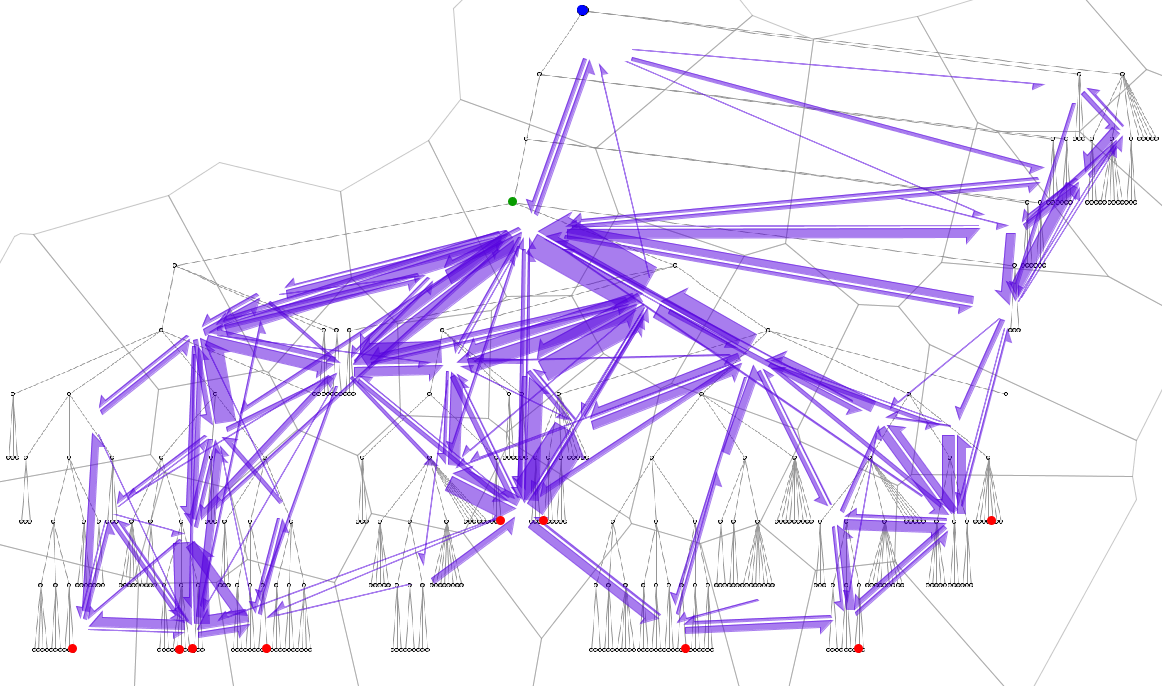
|
individual spatial pattern of movements;
relation to display content or structure;
individual search strategy
Map display of trajectories (MT) with interactive filtering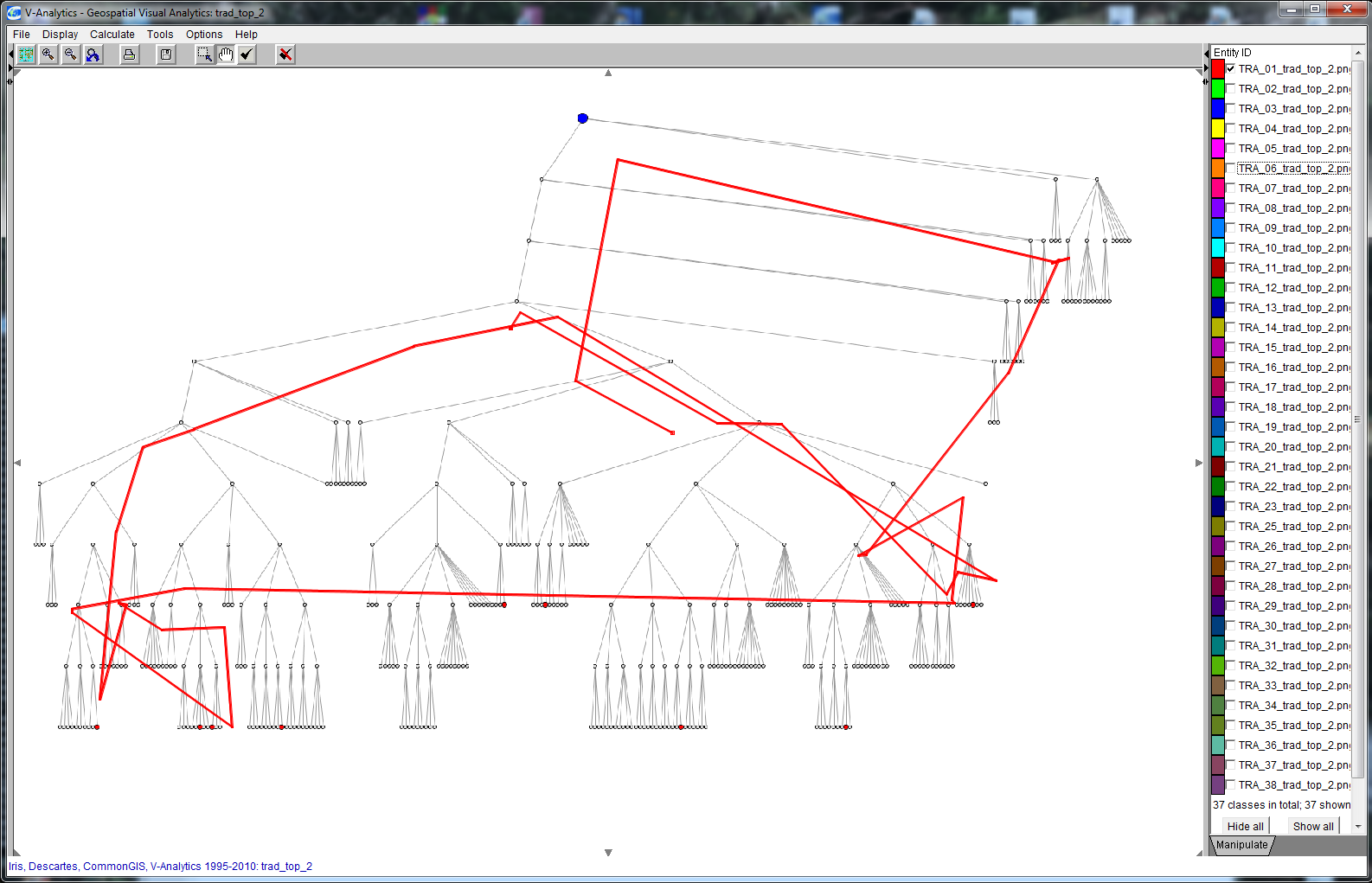 |
Space-time cube (STC) |
Flow map (FM) with interactive filtering and dynamic aggregation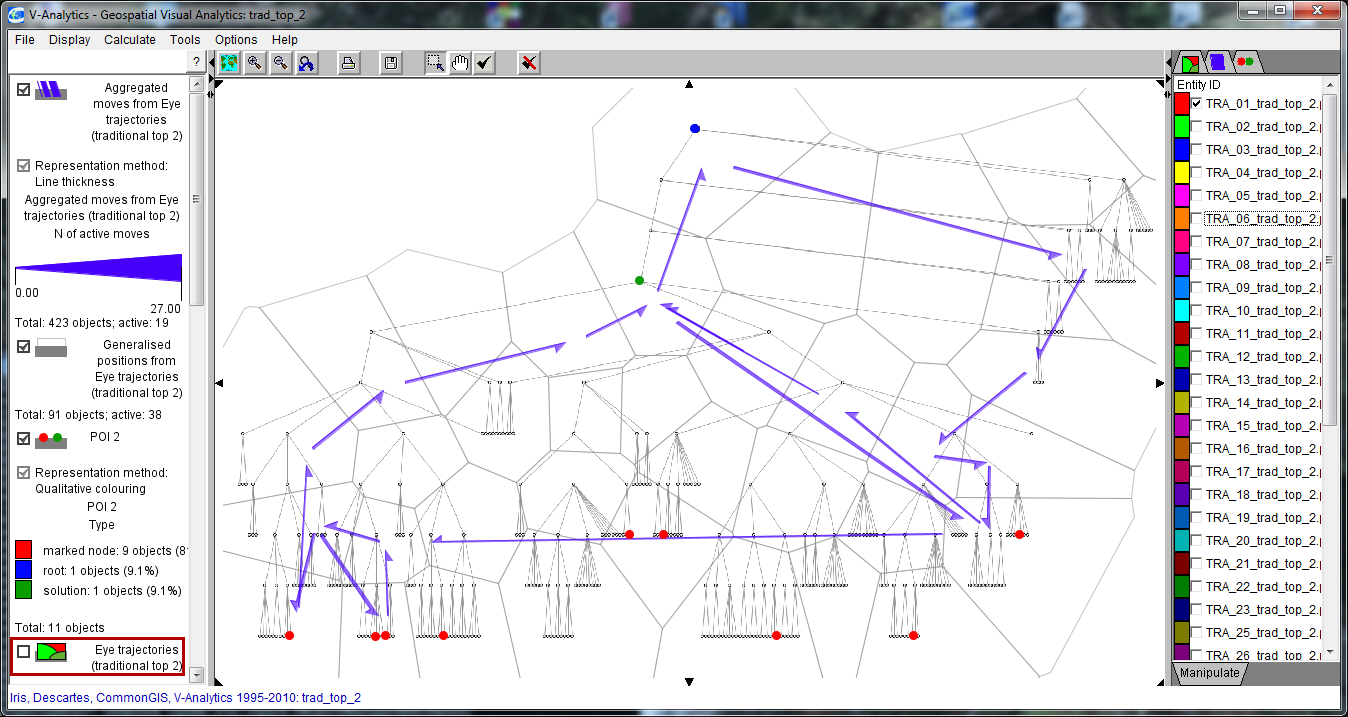
|
relation of attention foci to display content or structure;
repeated visits
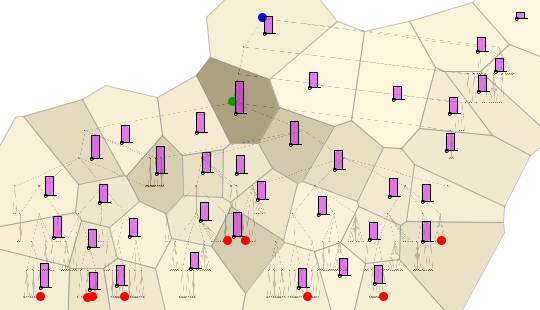
Returns to previous points;
places where users have difficulties
Temporal view of trajectories (TVT)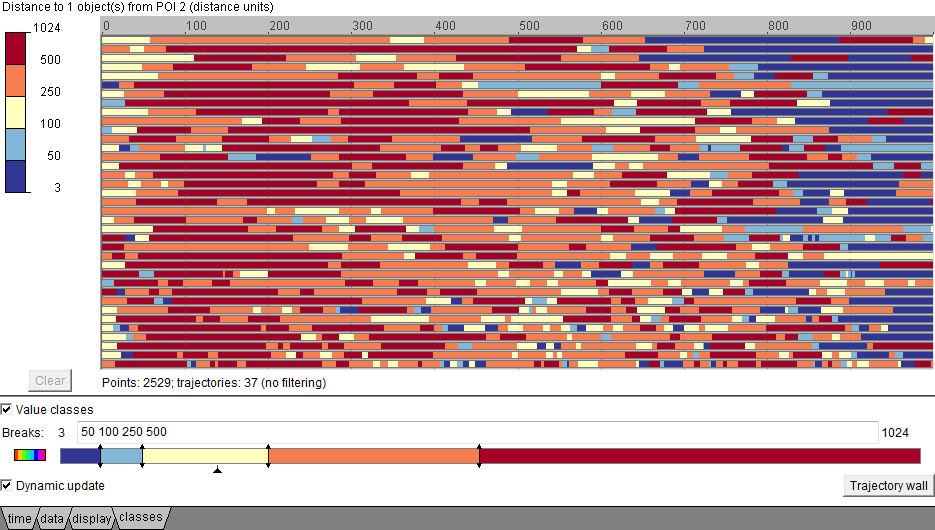 |
Trajectory segment filtering (TSF)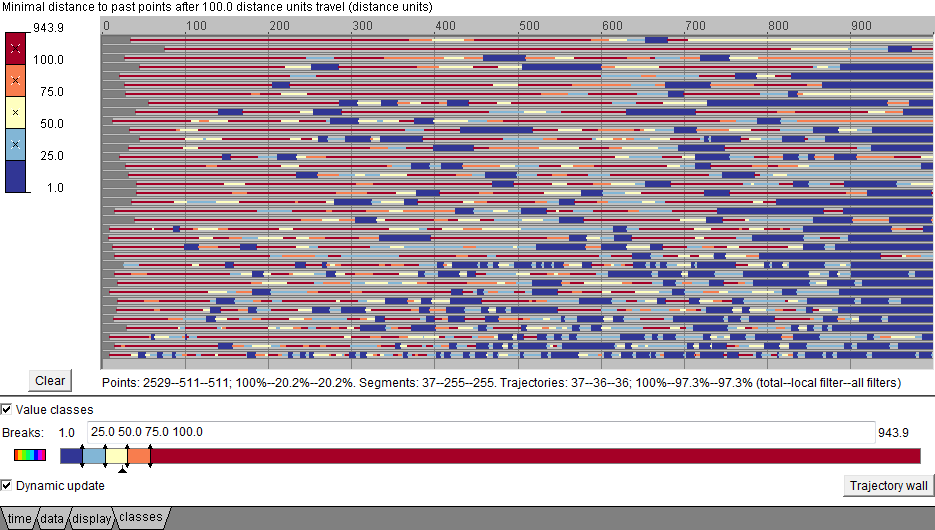 |
Map of filtered trajectory segments (MTF)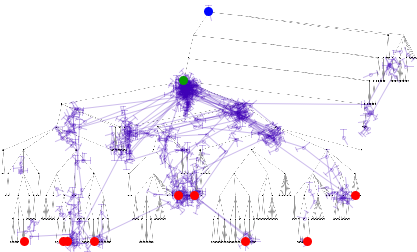 |
Extraction of events from trajectories (TEE) |
Presence and frequency of repeated moves

Map display of trajectories (MT) with interactive filtering
|
Space-time cube (STC) |


Flow maps of differences (FMD)
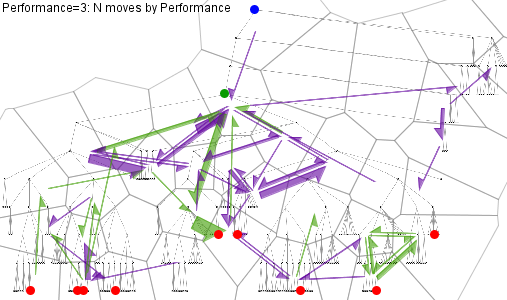

Attention maps of differences (AMD)
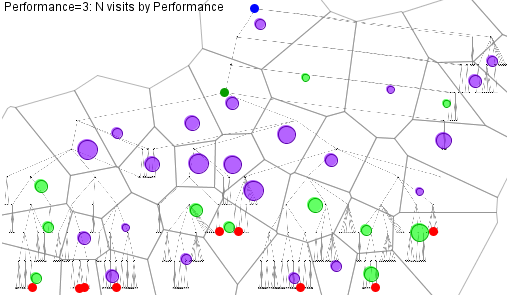



Time clustering by similarity of flows (CTF)


Time clustering by similarity of attention distribution (CTA)

